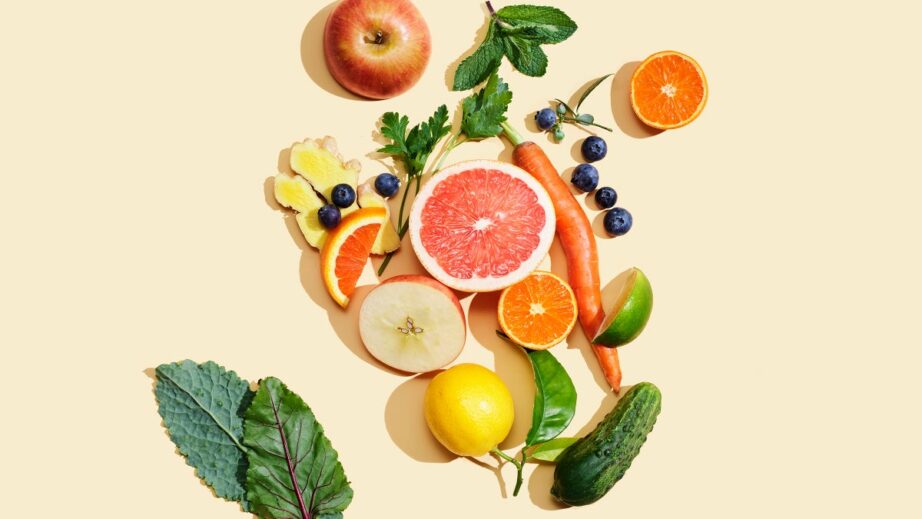In today’s health-conscious world, many people are increasingly concerned about the potential health risks associated with pesticide exposure in food. The Environmental Working Group (EWG) annually releases a list known as the Clean Fifteen, highlighting fruits and vegetables with the lowest levels of pesticide residues. These foods are considered safe to consume even when conventionally grown. In this comprehensive guide, we’ll delve into the Clean Fifteen list, explore the benefits of choosing low-pesticide foods, and address common questions about pesticide residues in produce.
What is the Clean Fifteen?
The Clean Fifteen is a list compiled by the EWG based on data from the U.S. Department of Agriculture’s Pesticide Data Program. The list identifies 15 fruits and vegetables that have the lowest levels of pesticide residues when grown conventionally. These foods are considered safe to consume, even if not purchased organically, as they are less likely to retain significant pesticide residues.
The Clean Fifteen List
Avocado
Avocados have a thick skin that protects the fruit from pesticide contamination, making them a safe choice for consumers.
Sweet Corn
Most sweet corn in the United States is grown from genetically modified seeds that are resistant to pests, reducing the need for pesticide applications.
Pineapple
Pineapples have a tough, spiky skin that helps protect the fruit from pests and reduces pesticide exposure.
Onion
Onions have multiple layers of skin that shield the edible portion from pesticide residues.
Papaya
Like sweet corn, most papayas sold in the United States are genetically modified to resist pests, resulting in lower pesticide use.
Sweet Peas (Frozen)
Frozen sweet peas are typically blanched before freezing, which helps remove pesticide residues.
Eggplant
Eggplants have a thick skin that protects the fruit from pests and reduces the need for pesticide applications.
Asparagus
Asparagus is a perennial crop with minimal pest problems, resulting in lower pesticide use.
Cauliflower: Cauliflower is closely related to broccoli and cabbage, which are known for their natural pest resistance, reducing the need for pesticides.
Broccoli
Broccoli is rich in natural compounds that help protect the plant from pests, reducing pesticide requirements.
Cantaloupe
Cantaloupes have a thick, rough skin that protects the fruit from pesticide residues.
Mushrooms
Mushrooms are grown indoors in controlled environments, minimizing exposure to pests and pesticides.
Cabbage
Cabbage is closely related to broccoli and cauliflower, sharing their natural pest resistance traits.
Honeydew Melon
Honeydew melons have a thick, smooth skin that provides a barrier against pesticide residues.
Kiwi
Kiwis are typically grown in regions with fewer pest pressures, resulting in lower pesticide use.
Benefits of Choosing Low-Pesticide Foods
Reduced Pesticide Exposure
Consuming foods from the Clean Fifteen list can help minimize exposure to pesticide residues, which may be associated with adverse health effects.
Cost Savings
Conventionally grown fruits and vegetables from the Clean Fifteen list are often more affordable than their organic counterparts, making healthy eating more accessible to all.
Environmental Impact
Choosing low-pesticide foods supports sustainable farming practices and reduces the environmental impact of pesticide use on ecosystems and wildlife.
Nutrient-Rich Options
Many foods on the Clean Fifteen list are rich in essential nutrients such as vitamins, minerals, and antioxidants, contributing to overall health and well-being.
Frequently Asked Questions (FAQs)
Are foods from the Clean Fifteen list completely free of pesticides?
While foods on the Clean Fifteen list have lower levels of pesticide residues compared to other produce, it’s still possible for trace amounts of pesticides to be present. However, these levels are generally within safe limits.
Should I still wash fruits and vegetables from the Clean Fifteen list?
Yes, it’s always a good idea to wash fruits and vegetables under running water before consuming them, even if they are on the Clean Fifteen list. Washing can help remove any remaining pesticide residues, dirt, or bacteria.
Are organic options better than foods from the Clean Fifteen list?
Organic foods are grown without synthetic pesticides, fertilizers, or genetically modified organisms (GMOs), making them a popular choice for those seeking to minimize pesticide exposure. However, foods from the Clean Fifteen list are considered safe to consume even when conventionally grown.
Can I trust the Clean Fifteen list to be accurate?
The Clean Fifteen list is based on data from the U.S. Department of Agriculture’s Pesticide Data Program and is regularly updated by the EWG. While it provides valuable guidance, it’s essential to consider factors such as farming practices and regional variations in pesticide use.
Are there any health risks associated with consuming foods from the Clean Fifteen list? Generally, foods from the Clean Fifteen list are safe to consume as part of a balanced diet. However, individuals with specific allergies or sensitivities should always read ingredient labels and consult with a healthcare professional if they have concerns.
Can I still support organic farming practices while consuming foods from the Clean Fifteen list?
Yes, choosing foods from the Clean Fifteen list allows you to support sustainable farming practices while enjoying a variety of affordable and nutritious options. You can also consider purchasing organic versions of other fruits and vegetables to further reduce pesticide exposure.
Conclusion
The Clean Fifteen list provides valuable guidance for consumers seeking to minimize pesticide exposure while enjoying a variety of affordable and nutritious fruits and vegetables. By incorporating foods from the Clean Fifteen list into your diet, you can support sustainable farming practices, reduce environmental impact, and promote overall health and well-being. Remember to wash all fruits and vegetables before consuming them, and consider factors such as regional variations in pesticide use when making food choices. With informed decision-making and a focus on balance, you can enjoy the benefits of a healthy diet while minimizing pesticide exposure.
- Comprehensive Analysis Top Vaporizers Unveiled By Dankstop - April 12, 2024
- Tincture Tales: Exploring the CBD Wonderland with Just CBD - April 12, 2024
- 13 Emerging Benefits and Uses of Yuzu Fruit - April 3, 2024


